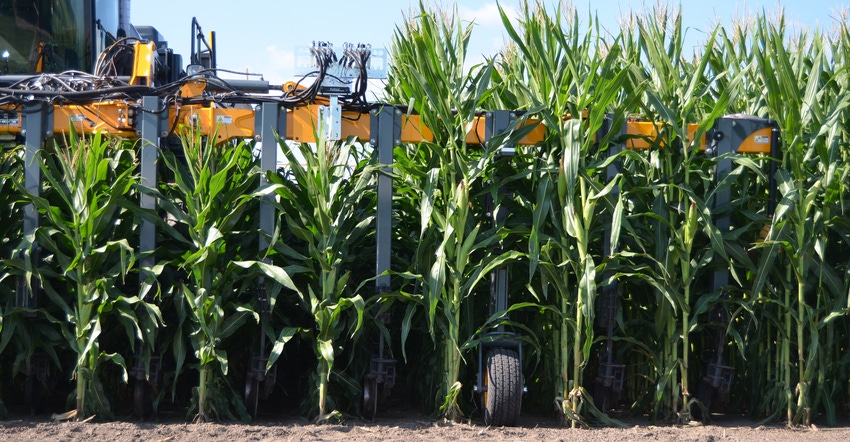
More than 20 years ago, Dave Nanda, then a plant breeder with Stewart Seeds, Greensburg, Ind., predicted that corn of the future would be short so plant populations could be higher. In fact, he began planting inbreds at 70,000 seeds per acre in his nursery to select for corn that could withstand high populations. Stewart Seeds is part of the Bayer family today.
Bayer scientists, plant breeders and the company’s top leaders also believe short corn and high densities will be important to feeding the world and controlling greenhouse gases. Mindy Ward, a Farm Progress editor, introduced farmers to Bayer’s ambitious project in The case for short cornstalks in September 2019.
Recently, Bayer held a virtual press conference to update farmers about its short-statue corn project. The occasion was the commercial release of the first short-stature corn hybrid, as part of what Bayer calls the Vitala corn production system, in specific regions of Mexico. Here’s a closer look:
Road to shorter corn. Manuel Bravo, CEO and president of Bayer Mexico, says that plant breeders, inspired by Norman Borlaug’s work with short wheat, have considered the advantages of short-stature corn for some 30 years.
“We started in earnest here in 2010, shortening the size of the corn plant on purpose so that we could increase plant density and produce more total weight of corn per acre,” Bravo explains.
He adds that several factors led to the first release in 2020 for 2021 in Mexico. “The advancement of precision technology and the ability to use FieldView as a tool to analyze data as part of a digital transformation was important,” he says. “We also benefited from collaborating with leading farmers in Mexico, and with BASF, in turning the system into reality.”
Systems approach. Vitala is about more than just short corn, Bravo says. It requires a systems approach, including narrow rows and a targeted strategy for pest control to make the system sustainable. Since these corn plants are about 3 feet shorter than regular corn plants, scouting is easier, and targeted applications with high-clearance sprayers can be made more easily.
Sustainability and environmental benefits. “There must be agronomic efficiency to farmers for doing this to offset increased seed costs,” says Manuel Oyervides Garcia, a scientist with Bayer who has worked closely with the project in Mexico. He says those benefits are real.
Lodging is all but eliminated, and there are indications, still under study, that short-stature corn plants root deeper and produce more roots. He also believes short-stature corn could play a role in reducing greenhouse gas emissions tied to climate change.
Breeding methods. This first short hybrid released with the Vitala system was developed using traditional breeding methods. “That means it can get to market faster because as a non-GMO product, there are fewer governmental regulations,” explains Kelly Gillespie, with research and development in the corn and soybean group for Bayer.
However, Bayer began pursuing a second approach through GMO programs as well. And just this year, Bayer added a third method when it began employing gene-editing techniques.
“We believe GMO versions may be better-suited in some parts of the world, including North America,” Gillespie says.
When will U.S. farmers see Bayer releasing short-stature corn hybrids? Gillespie’s best guess is sometime around mid-decade.
About the Author(s)
You May Also Like




